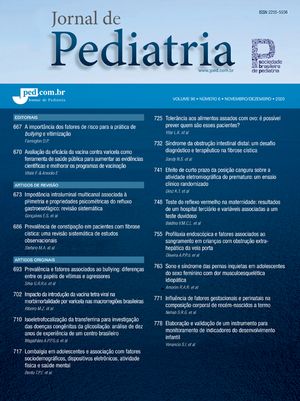
Septic shock (SS) is a frequent cause for admission to the pediatric intensive care unit, requiring prompt recognition and intervention to improve outcome. Our aim is to review the relevant literature related to the diagnosis and management of SS and present a sequential management for its treatment.
SourcesNon-systematic review of medical literature using the MEDLINE database. Articles were selected according to their relevance to the objective and according to the authors’ opinions.
Summary of the findingsThe outcome of sepsis and SS is dependent on the early recognition and implementation of time-sensitive goal-directed therapies. These include rapid aggressive fluid resuscitation followed by a well-designed pharmacotherapy. The goals of the resuscitation are the restoration of microcirculation and improved organ tissue perfusion. Clinical and laboratory markers are needed to assess the adequacy of the treatments. Altered pharmacokinetic and pharmacodynamic responses dictate that vasoactive agents should be adjusted to achieve the predetermined goals. In initial resuscitation with isotonic solutions (> 60 mL/kg), either crystalloid (normal saline) or colloid infusion could be used. Despite adequate fluid resuscitation, if: (a) wide pulse pressure, low blood pressure, or bounding pulses (high cardiac output, low systemic vascular resistance – SVR) are present, norepinephrine should be considered; (b) prolonged capillary refill, weak pulses, narrow pulse pressure, normotensive (low cardiac output, high SVR), dopamine, epinephrine or dobutamine should be considered. Adjunctive therapy with stress dose of corticosteroid is indicated in selected populations.
ConclusionsSeptic shock hemodynamics is a changing process that requires frequent assessment and therapeutic adjustments.
O choque séptico (CS) é uma causa freqüente de internação na unidade de tratamento intensivo pediátrica e requer reconhecimento e intervenção imediatos para que haja um desfecho favorável. Nosso objetivo é revisar a literatura relacionada ao diagnóstico e manejo do CS e apresentar um manejo seqüencial para seu tratamento.
Fontes dos dadosRevisão não-sistemática da literatura médica através de pesquisa na base de dados MEDLINE. Os artigos foram selecionados de acordo com sua relevância em termos do objetivo proposto e com base na opinião dos autores.
Síntese dos dadosO desfecho da sepse e do CS depende do reconhecimento precoce e da implementação de tratamentos sensíveis ao tempo e guiados por objetivos. Esses tratamentos incluem reanimação agressiva com fluidos seguida de tratamento medicamentoso bem elaborado. Os objetivos da reanimação são a restauração da microcirculação e a melhora da perfusão tecidual. Os marcadores clínicos e laboratoriais são importantes para avaliar a adequação dos tratamentos. Respostas farmacocinéticas e farmacodinâmicas alteradas indicam que os agentes vasoativos devem ser ajustados a fim de atingirem o objetivo pré-estabelecido. Na reanimação inicial com soluções isotônicas (> 60 mL/kg), é possível usar infusão tanto de cristalóides (solução salina normal) como de colóides. Apesar da reanimação adequada com fluidos, se: (a) uma pressão de pulso com grande amplitude, pressão arterial baixa, ou pulso oscilante (débito cardíaco alto, baixa resistência vascular sistêmica – RVS) estiverem presentes, o uso de noradrenalina deve ser considerado; (b) reenchimento capilar prolongado, pulso fraco e filiforme, pressão arterial normal (baixo débito cardíaco, alta RVS), deve-se considerar o uso de dopamina, adrenalina ou dobutamina. O tratamento concomitante com dose de estresse de corticosteróides é indicado em populações selecionadas.
ConclusõesA resposta hemodinâmica do CS é um processo variável que requer avaliação e ajustes terapêuticos freqüentes.








